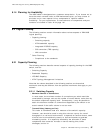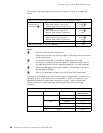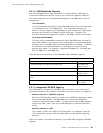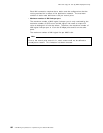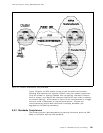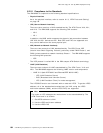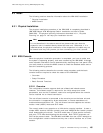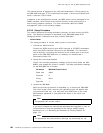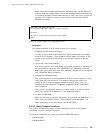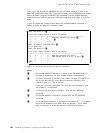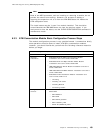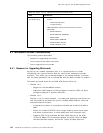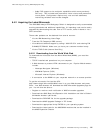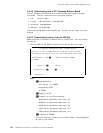
This soft copy for use by IBM employees only.
6.3 Install
The following sections describe information about the IBM 8285 installation:
•
Physical Installation
•
8285 Console
6.3.1 Physical Installation
The physical installation procedure of the IBM 8285 is completely described in
IBM 8285 Nways ATM Workgroup Switch: Installation and User
′
s Guide
,
SA33-0381. The physical planning information described in 6.1, “Physical
Planning” on page 91 can help your installation as well.
Note
It is not described in the above manual but please make sure that the
expansion unit is installed directly above the base unit. Otherwise, if it is
installed below, the physical connection of the expansion unit cable may not
be smooth and may also prevent you from connecting your local console.
6.3.2 8285 Console
When the physical installation procedure is completed, you have to make sure
the system is operating properly, and start customizing the IBM 8285. Although
some valuable information can be determined by observing the front panel LEDs,
you really need to connect the 8285 console to check the detailed status and to
start the customizing process.
The following sections describe the console setup procedure and the basic
console functions required to check the status of the IBM 8285.
•
Overview
•
Setup Procedure
•
Basic Console Functions
6.3.2.1 Overview
The configuration console supports both out-of-band and inband access.
However, out-of-band access is required for the initial setup since some
parameters, such as the IP address, need to be configured before the console
can be reached via an inband connection.
The out-of-band console is connected to the console port on the base unit and
the connection is supported by direct attachment or remote attachment via
modem/telecommunication link. The out-of-band console supports two access
modes: nrmal (ASCII) mode and SLIP mode.
The normal mode is very popular as a LAN device console interface. It uses a
simple ASCII terminal interface normally and uses XMODEM file transfer protocol
when downloading microcode. The SLIP mode uses a Telnet session normally
and uses TFTP when downloading the microcode. Both TCP/IP protocols use
SLIP as the protocol stack. The IBM 8281 and 8282 also use a SLIP interface as
their configuration console interface but they use a native interface not a Telnet
session.
Chapter 6. IBM 8285 Planning and Installing 105



